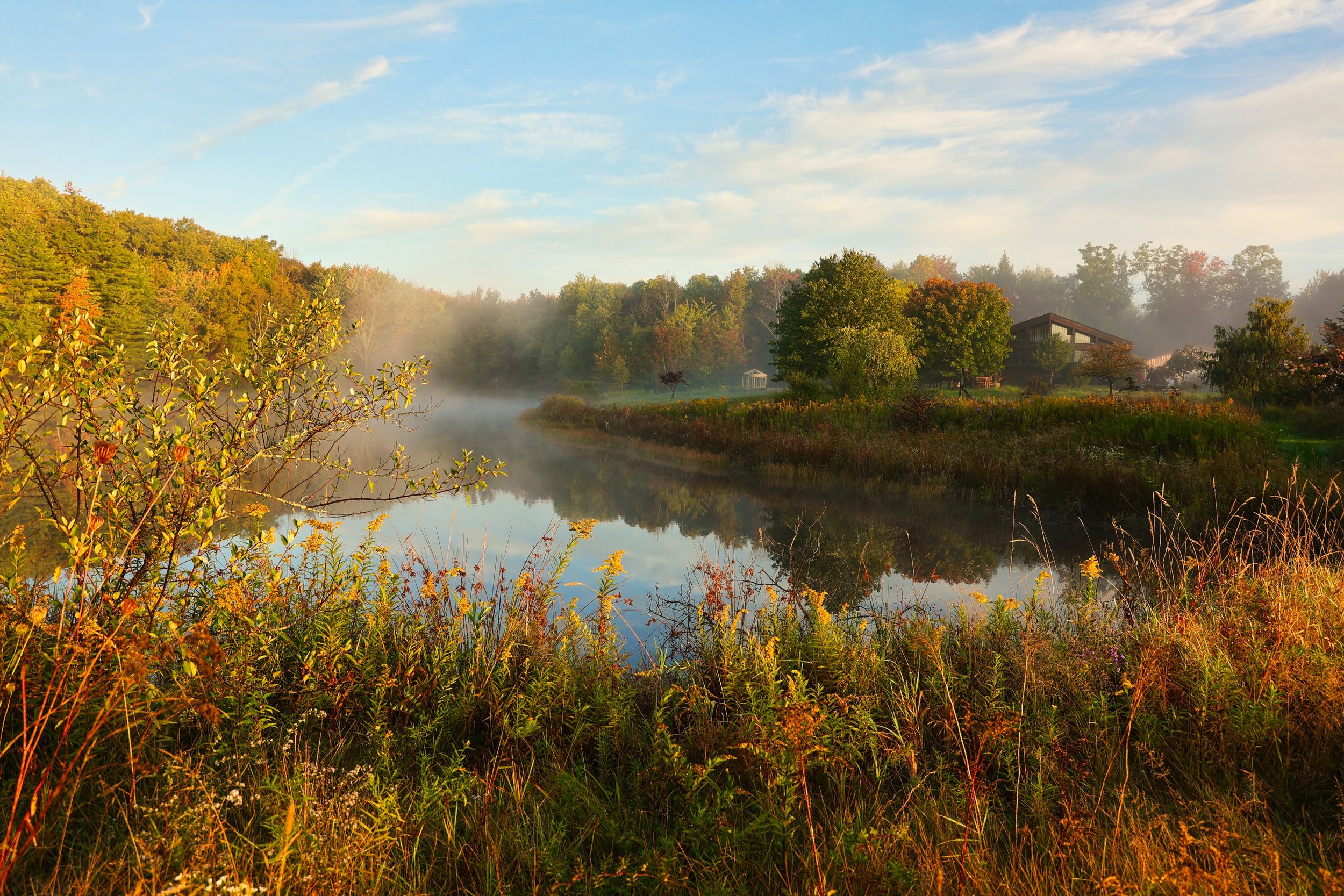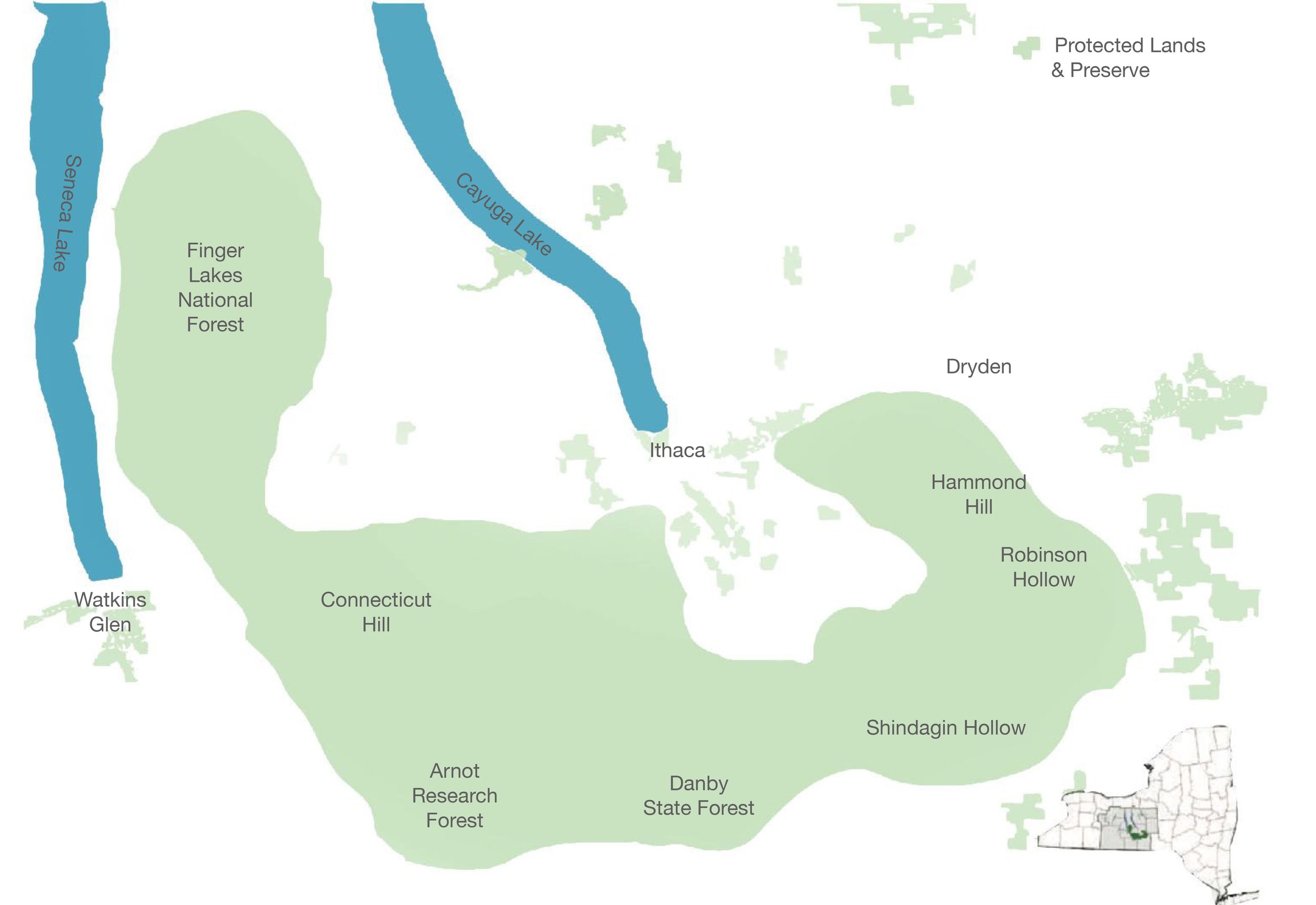Our Vision
We believe in creating an inspirational and regenerative space where one can work, play and live life to the fullest.
We realized we could only achieve this by coming together and building a supportive and stimulating environment; surrounding ourselves with positive people and experiences; caring for the land so that it could in turn nurture us; and learning to value the quality of our interactions with each other, the greater community, and our surroundings. Thus our vision for Flock was formed based on four simple tenets:
Create a higher quality of life.
We have come together to create a regenerative space—physically, emotionally, and spiritually—where one can feel nurtured, refreshed, stimulated and enlivened, which contributes to a life well-lived.
Spark new opportunities.
Flock is a personal project collaboration—except this one is a lifelong pursuit! By embarking on this journey together, we hope to create a supportive environment to do the work we love while keeping the doors open to new, stimulating ideas and opportunities.
Build a strong community.
Community is at our core. We came together to support one another and those around us because we know when we do—we can contribute to a stronger, more vibrant, and caring community overall.
Be stewards of our environment.
Nature gives so much to us all and we want to give back to nature by being servant stewards of the earth. We see our time at Flock as an opportunity to live harmoniously with our environment, celebrate in earth’s beauty, and communicate her wonders to the world.
Our Flock
Sander
Sander grew up in a small town in the Netherlands and thrives in an environment where he can create from his imagination, make things by hand, and troubleshoot challenges through new or tried-and-true solutions. His interests naturally drew him to the world of architecture and carpentry, but later pursued a career in motion graphics and visual communication. His work centers on helping people put their ideas into motion and his skills have been sought out by brands such as Google, Ikea, Squarespace, Strava, and AirBnB, for example. Together with friends, he co-created a popular motion design festival called BlendFest and has also wielded the camera for Plant One On Me and Flock YouTube channels.
Summer Rayne
Summer Rayne grew up in Northeastern Pennsylvania on land surrounded by farm, field and forest. If her hands weren’t in the dirt, then they were likely drawing or documenting elements of the natural world. She has always sought out ways to creatively and subtly communicate her love of nature to a wider audience and has done so through the fashion, food, and entertainment industries. She is widely regarded as the world’s first eco-model and has worked with a range of brands including Timberland, Levis, and Pirelli. She graduated from Cornell University, studying environmental science and entomology and produces both Plant One On Me and Flock.
Joey
Joey is a Canadian-born photographer and director who seeks out adventure and thrives in an ever-changing environment. His environmental portraiture work has taken him all around the world photographing subjects for clients such as National Geographic Channel, U.S. Army, Canon, Jose Cuervo, Summit Entertainment, History Channel, Lavazza Coffee, and others. His own projects include photographing ascetics and endangered cultures; documenting the guerrilla fighters of Kurdistan; and documenting the different cultures across Ethiopia, for example. His work has been seen on major billboards and in Vanity Fair, The Sunday Times, The Atlantic, and many others.
The Land
Perched on top of ~90 idyllic acres in the picturesque Finger Lakes region of New York, Flock is a collaborative venture focused on building a creative community and living laboratory with regeneration and mindfulness at its core.
Flock rests on ~90 acres of breathtaking land in the southern portion of the Finger Lakes of New York—a region rich in geological history—shaped and sculpted by the hands of glaciers. The land is centrally located in what is known as “The Emerald Necklace”, an impressive forested mosaic, which arcs around the city of Ithaca, and contains more than 50,000 acres of conserved land—stretching from the Finger Lakes National Forest in the west to Hammond Hill and Yellow Barn State Forests in the east. The area is considered “a world-class ecological, recreational and educational resource” and contains 35 free pubilc nature preserves, 50 miles of walking trails, and nearly 18,000 feet of protected lakeshore. Every year, around 1,000 more acres become further protected within this vital area where Flock sits.
Conservation lands of the Emerald Necklace in the Finger Lakes region of New York state
Flock and the Finger Lakes Area: A Retrospective and a Look Ahead
In the late Fall of 2020—after two years of searching for land in the Finger Lakes region with the intention of living communally—we were able to secure a little slice of heaven. Directly prior to our stewarding of the land, part of the area was managed as a well-respected garden center and container nursery for 28 years. Before that, however, it primarily lay fallow and had one condemned house in the 1970s. Given the even-aged stands (~60-70 years old) of a good portion of the forest, it is evident that it had been cleared and used for marginal grazing lands and lumber harvest in the late-1800s and into the mid-1900s. A few individual trees and older growth forests on highly sloped land have seemed to stand through the test of time and have been estimated at around 200-300 years old (Mike DeMunn, Onödowá’ga:’ forester, in conversation, 2021).
This area of land likely took a while to have any permanency in settlement due to its remote location, dense forest, and its distance to a major river system. This area in particular was known by the Onödowá’ga:’ as “Shades” due to its dense tree coverage and ultimately proved to be quite the obstacle for many. There were a few paths that traversed across the surrounding area prior to the Revolutionary War, most of which originated at Painted Post, now located in Steuben County, New York. The first record of deeded land specifically on the land that Flock now sits was in 1861, which sold for a total of $500, which would be $14,705 in today’s dollars.
Prior to that in 1791-1794, this parcel of land was part of a survey known as the Watkins and Flint Purchase that divided the larger area into twelve townships, which in turn was subdivided into quarter townships. It was bounded north by the Military Lands retained for grants to Revolutionary War veterans and to the northwest by the “Purchase of James Watson” and to the west by the “Preemption Line” and the Gorham and Phelps Tract. The entire Watkins and Flint Purchase comprised parts of modern day Tompkins County, Tioga County, Schuyler County, Chemung County, and the towns of Newfield, Danby and Caroline.
Given the history of the land, it’s forested nature, poorer soil quality and its distance to major river systems, there likely were no known permanent or semi-permanent First Nation settlements, though it’s plausible it could have served as ancestral hunting lands most likely for the Susquehannocks and perhaps even for the Onödowá’ga:’ and Gayogo̱hó꞉nǫʼ to the north or the Lenape to the East. Based on what is known from history and archaeology, homeland territories for many groups were not immutable through time and fluctuated in relation to neighboring indigenous peoples (J.C. Lothrop, Ph.D., Curator of Archaeology, New York State Museum, in email 2022).
In 1779 during the American Revolution, General George Washington appointed General John Sullivan and James Clinton to head the Sullivan Expedition, which was a brutal military campaign mobilizing 6,200 troops that razed and decimated almost 50 native villages in the greater Finger Lakes area. The military campaign did not traverse this land according to historic maps, likely because there were no permanent indigenous settlements. Instead, the troops marched from Easton, Pennsylvania and followed the northern branch of the Susquehanna River northward, largely targeting the Gayogo̱hó꞉nǫʼ, some of whom were able to escape to Canada. However, there has been a recent and uplifting revival of some native Gayogo̱hó꞉nǫʼ rematriating to the Finger Lakes area—northwest of the Finger Lakes National Forest—and are working to reestablish some of their cultural heritage that had gone missing for nearly 200 years.







